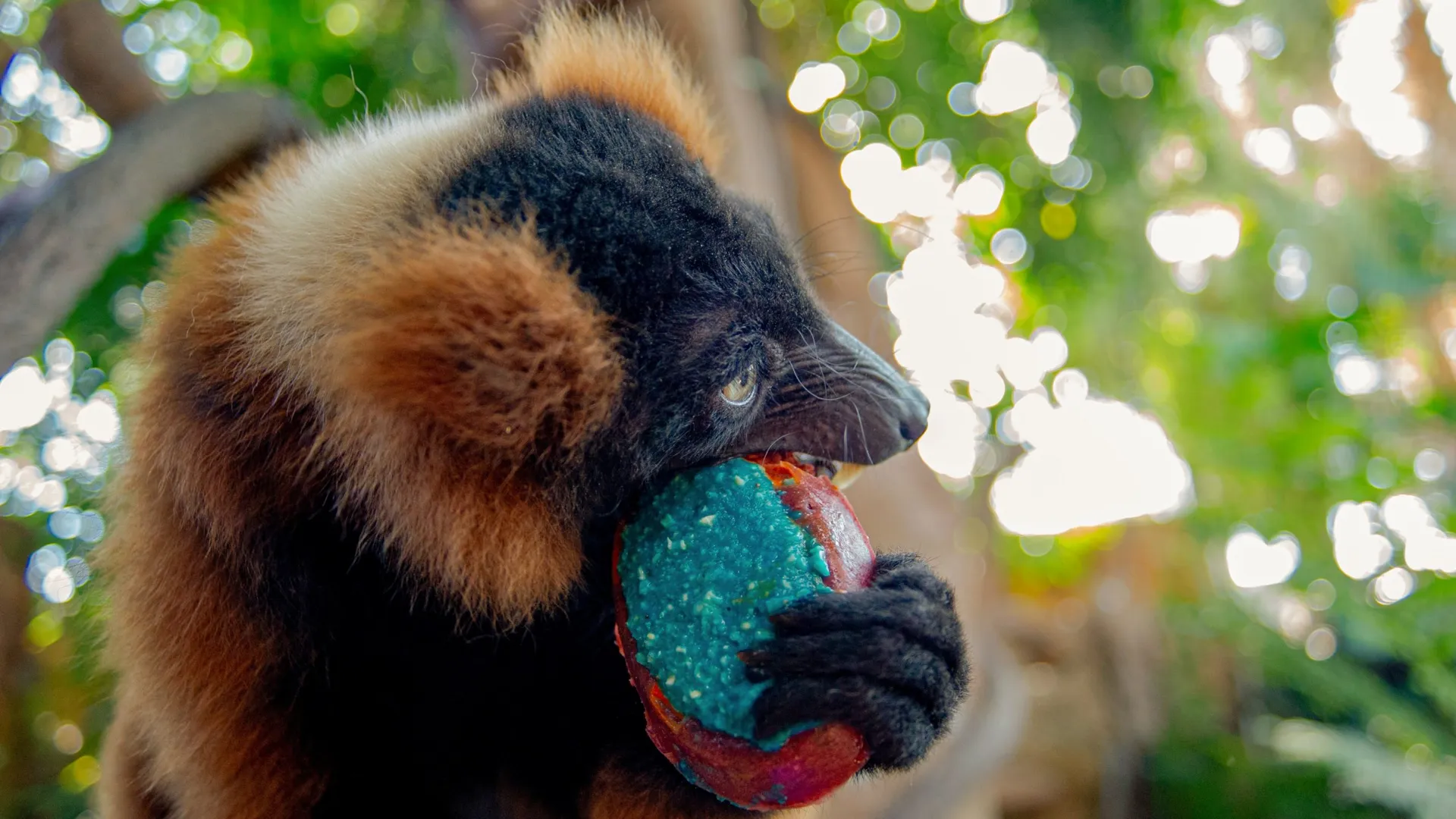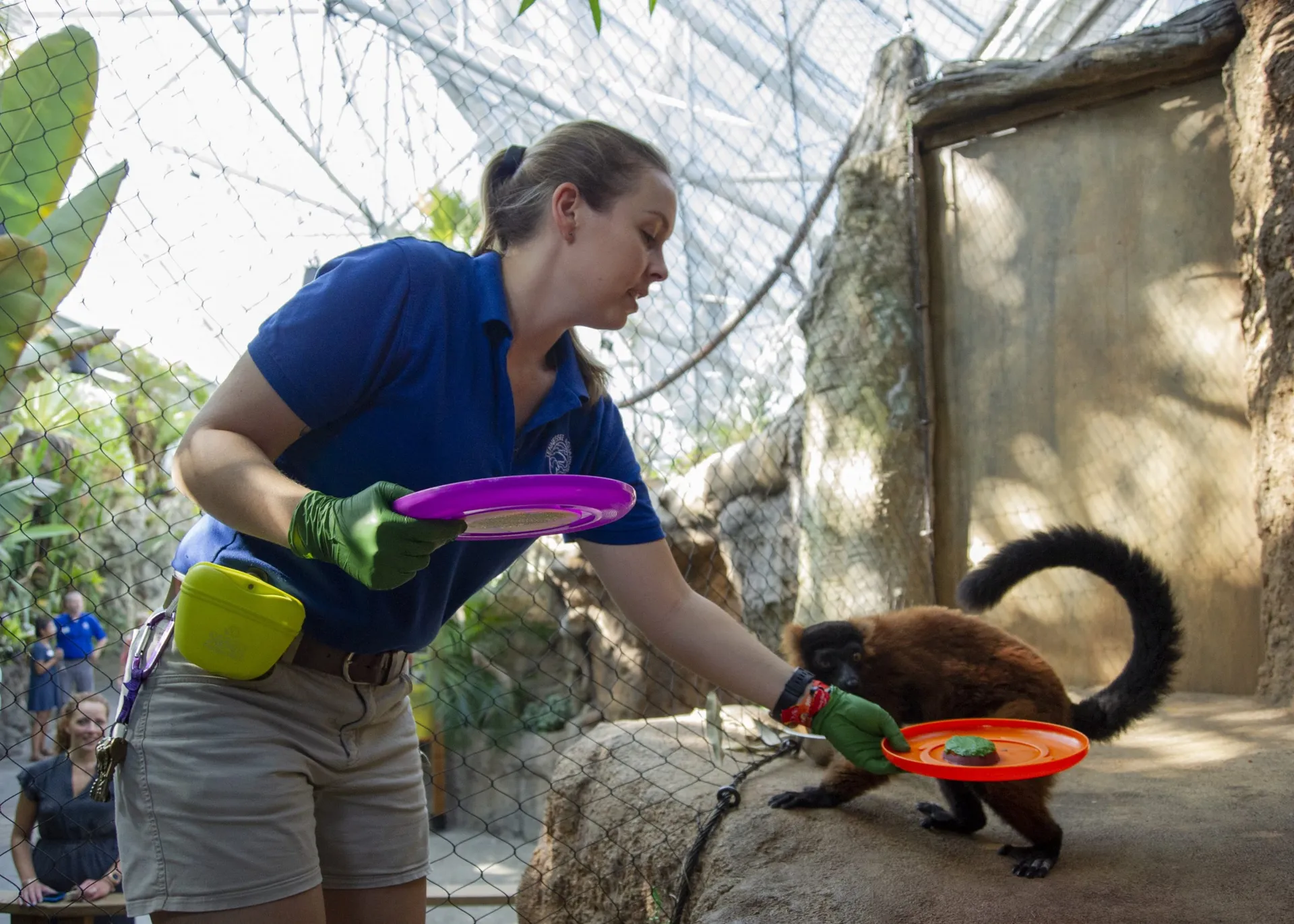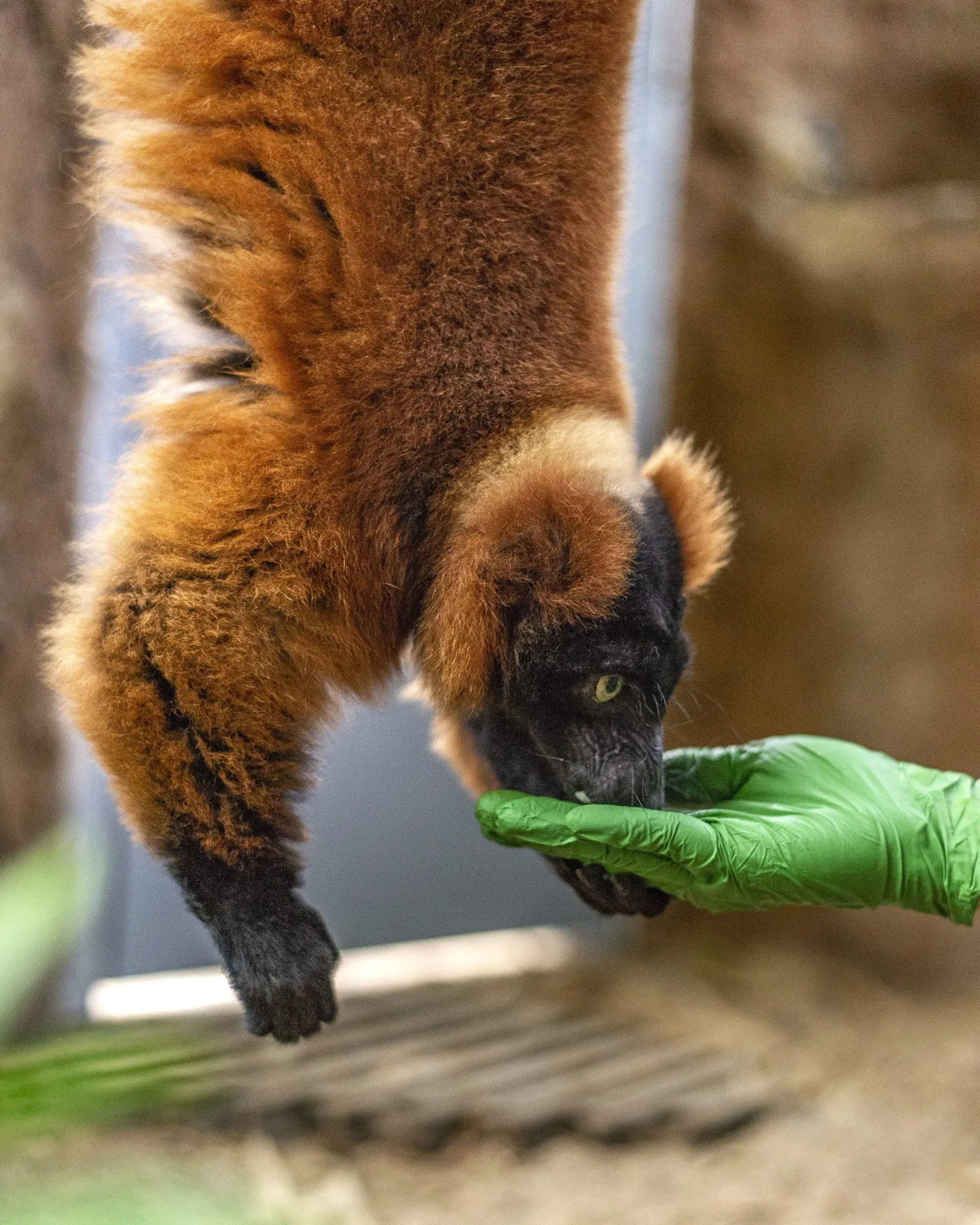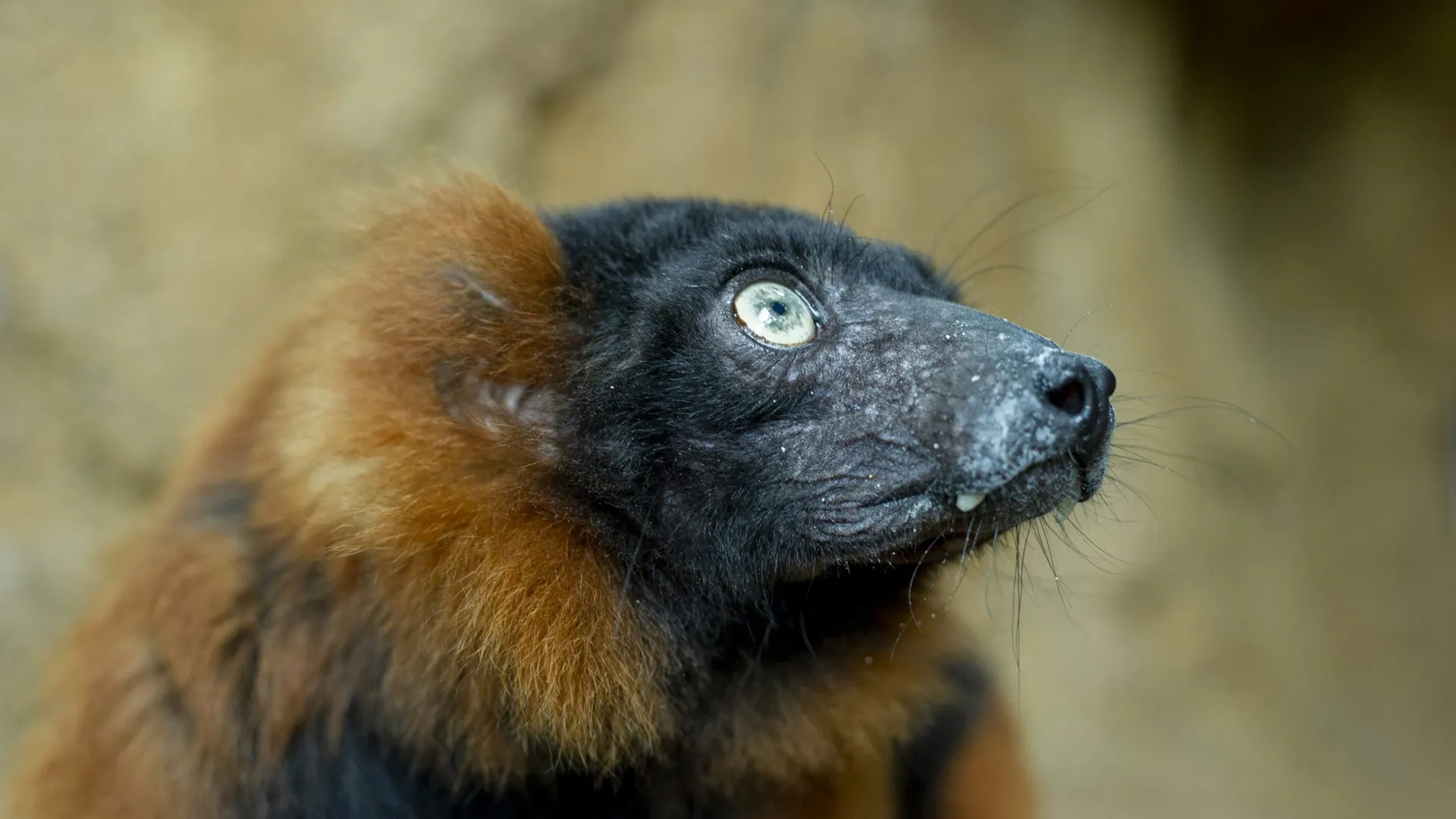In the rainforests of Northeastern Madagascar, few sounds are as memorably distinctive as the piercing shrieks of the Red-ruffed Lemur. This critically endangered species is renowned for its boisterous bellows, which can be heard up to a half a mile away.
For the last four years, guests riding the escalator to the top of Ocean Journey may have been lucky enough to hear the Aquarium’s female Red-ruff, Josephine, long before they saw her. Her alarm calls reverberated off the inside of the building’s glass peaks, sending shivers of haunted delight down the spine of anyone within earshot.
As of today, Lemur Forest is a quieter place.
Earlier this year, Josephine’s (“Jo’s”) caretakers noticed she was losing weight, had diluted urine and was experiencing stiffness and a lack of energy, all of which are symptoms of kidney failure. Her condition was confirmed via urine analyses and bloodwork in April.
As the kidneys fail, the body’s ability to filter and remove toxins from the blood and body tissue is impaired. This condition, which is common in elderly lemurs, is chronic, incurable and becomes increasingly debilitating as it progresses.
“We’ve been watching Josephine carefully for months now, and as always, her quality of life was the most important thing on our mind,” says Staff Veterinarian Dr. Chris Keller. “To die of kidney failure — I can’t imagine a more miserable way to pass away. We were not going to allow Josephine to endure that type of suffering.”
Immediately after her diagnosis, Jo’s animal care specialists began keeping detailed daily evaluations of her condition in a log. Each day was assigned a “score” between one and five based on her behavior and demeanor, with higher numbers indicating better days.
In an effort to ensure these scores remained as high as possible for as long as possible, important changes were made to Jo’s care regimen.
To accommodate her reduced mobility, caretakers rearranged her backup area to make navigation and feeding safer and less taxing. Mobility ramps and structures were added. She was provided with additional lounging baskets. Her access to water and fruit juice bowls was increased.
After her diagnosis, Josephine’s caretakers adjusted their schedules each day to ensure she had more time between doses of medicine and to maximize the time she had to eat.
“The diagnosis was like a punch to the gut, but we knew what we could do and that was give her the best care she could have for the remainder of her life,” says Animal Care Specialist II Maggie Sipe. “Our whole days became about her, and she really did well for longer than we expected.”
Although kidney failure can rapidly progress, the adjustments to her care protocols helped to slow Josephine’s decline and ensure she lived as full a life as possible, Dr. Keller says.
“Our goal was that good days out numbered the bad days,” he says. “When you consider that she’s in the top 10 percent of elderly animals, in terms of survivorship, it indicates that she has a level of inherently good health, is long-lived and has done well.”


Jo celebrated her 20th birthday on May 31. At the time she was humanely euthanized today, she was the seventh oldest Red-ruffed Lemur in the United States. Her age was well past the threshold of the Association of Zoos and Aquariums’ median life expectancy for Red-ruffed Lemurs, which ranges from 15 to 30 years in human care.
During her long life, Josephine exuded abundant charisma and — before the onset of her condition — showcased many behaviors and abilities that awed hundreds of thousands of visitors. These interactions helped to forge connections between the public and lemurs in the wild, raising awareness of the many challenges they face to survival.
Lemurs are incredibly social animals, and their communities are staunchly matriarchical. Until the arrival last year of Jessie, a Red-collared Brown Lemur, Josephine was Lemur Forest’s lone female and, thus, its undisputed leader.
“She was the shining example of the ‘Lemurs are matriarchal’ message,” Sipe says. “Every time I informed a crowd that ‘Josephine believes women rule the world’ and got to see the faces of little girls light up, that was always huge for me.”
Guests visiting Lemur Forest often saw Josephine showing her dominance of her home by chasing around and after the smaller Ring-tailed Lemurs. They also learned about Red-ruffs’ important role as the world’s largest pollinators, which Josephine demonstrated by using her long tongue to drink nectar from an artificial flower. In so many ways, she opened countless eyes to the beauty and importance of all lemurs.
With Josephine’s passing, 10 lemurs still reside in Lemur Forest: two Red-collared Browns, seven Ring-tails and a male Red-ruff, Avior.
Now, caretakers are focusing on Avior and minimizing the impact Josephine’s death has on him. Until such time as a new companion can join him at the Aquarium, he is being offered increased enrichment and training to provide more stimulation in her absence.
Even though Josephine’s voice will no longer echo through the Tropical Cove, her impact will continue to reverberate through the countless people she touched and the love she inspired as an ambassador for her wild counterparts.
“Every now and then in your career, you get an animal who just stands out, and Jo was one of those,” Sipe says. “I say all the time that we are grateful for her service to us. I’m just so thankful to have been a part of her life and that she chose to trust me with her remaining years.”

The diagnosis was like a punch to the gut, but we knew what we could do and that was give her the best care she could have for the remainder of her life. Our whole days became about her, and she really did well for longer than we expected.
